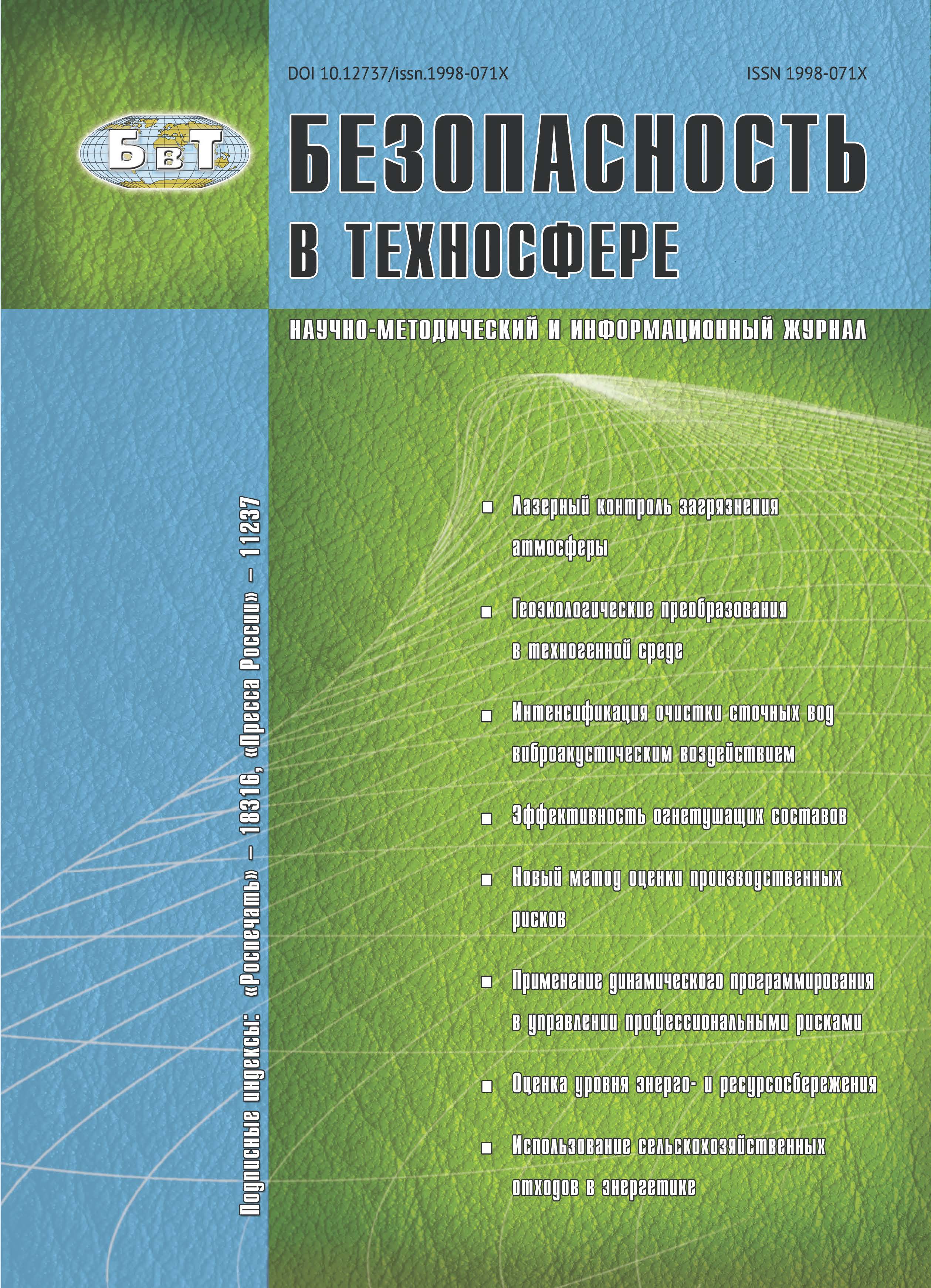Izhevsk, Izhevsk, Russian Federation
Izhevsk, Russian Federation
In this work are discussed the problems of emergency evacuation in case of fire in a building. Has been proposed a model of controlled evacuation based on minimizing the time for evacuation by the routes which are safe for people. The necessity of designing a system for adaptive control that automatically designs evacuation routes for the people in a burning building has been justified. For the route design purposes has been put in a function defining the possibility of safe evacuation on route segments depending on the state of environmental parameters in the building. The presented system of adaptive control supports the possibility for management of people evacuation from the building in case of fire in the real time mode. System operation modes and conditions of transition between them have been considered. Software and hardware implementations for the system have been proposed. A method for system’s relative efficiency estimation has been presented, and the efficiency of the system for adaptive control using the said method has been demonstrated.
evacuation management, microcontrollers, wireless systems, algorithms, adaptive system, computer modeling, terrain feature, adaptive control, emergency evacuation.
1. Введение
Существующие системы оповещения и управления эвакуацией (СОУЭ) в основном поддерживают режим указания путей эвакуации по предварительно спроектированным маршрутам.
1. Tabirca T., Brown K. N., Sreenan C. J. A dynamic model for fire emergency evacuation based on wireless sensor networks. Eighth International Symposium on Parallel and Distributed Computing. Ieee. - 2009. - R. 29-36. DOI:https://doi.org/10.1109/ISPDC.2009.33
2. Ramuhalli P., Biswas S. Managed traffic evacuation using distributed sensor processing. Nondestructive Evaulation for Health Monitoring and Diagnostics. International Society for Optics and Photonics. - 2005. - R. 48-58. DOI:https://doi.org/10.1117/12.599738
3. Tolkachev M. I., Chaldaeva E. I., Romantsov I. I. Aktual’nost’ effektivnogo opoveshcheniya o vozniknovenii chrezvychaynoy situatsii v obrazovatel’nykh uchrezhdeniyakh s primeneniem programmno-apparatnogo kompleksa “Strelets - monitoring” [The urgency of effective notification about the emergence of an emergency situation in educational institutions with the use of the software and hardware complex “Sagittarius-monitoring”]. Nerazrushayushchiy kontrol’ [Nondestructive testing]. 2014, V. 2, pp. 240-242. (in Russian)
4. Peterson J. W. Emergency lighting system and method: pat. 7255454 SShA. - 2007.
5. Hutchison J. R., Yamazaki M. Emergency lighting system: pat. 7800511 SShA. - 2010.
6. MILS® Intelligent Guidingand Emergency Lighting Systems. Available at: http://www.marimils.com/ (accessed 02 March 2017).
7. Shikhalev D. V. O strukture i funktsiyakh sistemy upravleniya evakuatsiey lyudey pri pozharakh [On the structure and functions of the evacuation management system for people in fires]. Tekhnologii tekhnosfernoy bezopasnosti [Technologies of technospheric security]. 2014, I. 4 (56). Available at: http://ipb.mos.ru/ttb (accessed 03 February 2017). (in Russian)
8. Shikhalev D. V., Khabibulin R. Sh. Opredelenie napravleniya bezopasnoy evakuatsii pri pozhare s primeneniem optimizatsionnykh algoritmov teorii grafov [Determination of the direction of safe evacuation in a fire with the use of optimization algorithms of graph theory]. Problemy tekhnosfernoy bezopasnosti [Problems of technospheric security]. Moscow, Akademiya GPS MChS Rossii Publ., 2013, p. 113. (in Russian)
9. Shikhalev D. V., Khabibulin R. Sh. Sistemy upravleniya evakuatsiey v zdaniyakh torgovo-razvlekatel’nykh tsentrov [Evacuation management systems in the buildings of shopping and entertainment centers]. Pozharovzryvobezopasnost’ [Fire and explosion safety]. 2013, V. 22, I. 6, pp. 61-65. (in Russian)
10. Shikhalev D. V., Khabibulin R. Sh. Matematicheskaya model’ opredeleniya napravleniya bezopasnoy evakuatsii lyudey pri pozhare [A mathematical model for determining the direction of safe evacuation of people in a fire]. Pozharovzryvobezopasnost’ [Fire and explosion safety]. 2014, I. 4, pp. 51-60. (in Russian)
11. Shikhalev D. V., Khabibulin R. Sh., Armel Ulrich Kemloh Wagoum. Development of a safest routing algorithm for evacuation simulation in case of fire // Proceedings of the 6th International Conference on Agents and Artifical Intelligence. - LoireValley, France, 2014. - Pp. 685-690. DOI:https://doi.org/10.5220/0004919706850690.
12. Jülich pedestrian simulator. About. Available at: http:// www.jupedsim.org/2016-11-01-introduction.html (accessed 04 March 2017). DOI:https://doi.org/10.5281/zenodo.160168
13. Galiullin M. E. Sozdanie i ispol’zovanie prostranstvennoinformatsionnoy modeli zdaniya (PIM) dlya rascheta velichiny riska pri sostavlenii deklaratsii pozharnoy bezopasnosti [Creation and use of the spatial information model of the building (PIM) for calculating the magnitude of the risk in the preparation of the fire safety declaration]. Bezopasnost’ v tekhnosfere [Safety in the Technosphere]. Izhevsk, 2015, I. 9, pp. 60-81. (in Russian)
14. Kholshchevnikov V. V. Lyudskie potoki v zdaniyakh, sooruzheniyakh i na territorii ikh kompleksov. Dokt. Diss [Human flows in buildings, structures and on the territory of their complexes. Doct. Diss]. Moscow, 1983. (in Russian)
15. Kolodkin V. M., Galiullin M. E. Programmnye algoritmy, realizuyushchie model’ dvizheniya lyudskikh potokov v sisteme upravleniya evakuatsiey lyudey iz zdaniya [Software algorithms that implement the model of the movement of human flows in the system for managing the evacuation of people from the building]. Pozharovzryvobezopasnost’ [Fire and explosion safety]. 2016, V. 25, I. 10, pp. 75-85. DOI:https://doi.org/10.18322/PVB.2016.25.10.75-85. (in Russian)
16. Sivkov A. M. Dvukhluchevoy schetchik posetiteley [Two-beam counter of visitors]. Bezopasnost’ v tekhnosfere [Safety in the Technosphere]. Izhevsk, 2017, I. 11, pp. 63-71. (in Russian)
17. Varlamov D. V. Dinamicheskiy vizual’nyy ukazatel’ putey evakuatsii [Dynamic visual indicator of evacuation routes]. Bezopasnost’ v tekhnosfere [Safety in the Technosphere]. Izhevsk, 2017, I. 11, pp. 51-54.
18. Vashtiev V. K. Besprovodnoy rechevoy opoveshchatel’ o pozhare v zdanii [Wireless voice alarm about a fire in the building]. Bezopasnost’ v tekhnosfere [Safety in the Technosphere]. Izhevsk, 2017, I. 11, pp. 156-159. (in Russian)
19. Microcontroller ATmega128RFA1. Available at: http:// www.atmel.com/devices/atmega128rfa1.aspx (accessed 02 March 2017).
20. Vargauzin V. Radioseti dlya sbora dannykh ot sensorov, monitoringa i upravleniya na osnove standarta IEEE802.15.4 [Radio networks for data acquisition from sensors, monitoring and control based on the IEEE802.15.4 standard]. Elektronnye komponenty [Electronic Components]. 2005, I. 2, pp. 17-21. (in Russian)
21. Fire Dynamic Simulator - FDS. Available at: http://fire.nist.gov/fds/ (accessed 01 March 2017).







